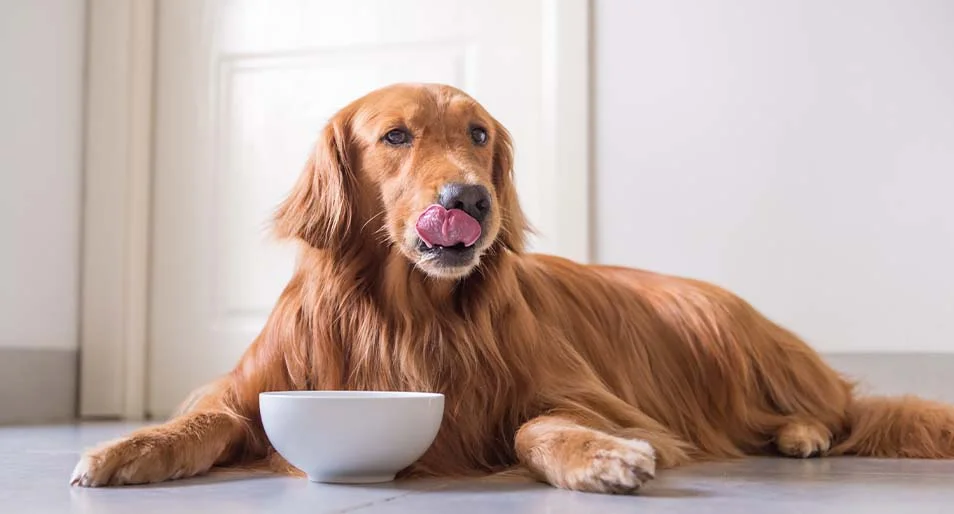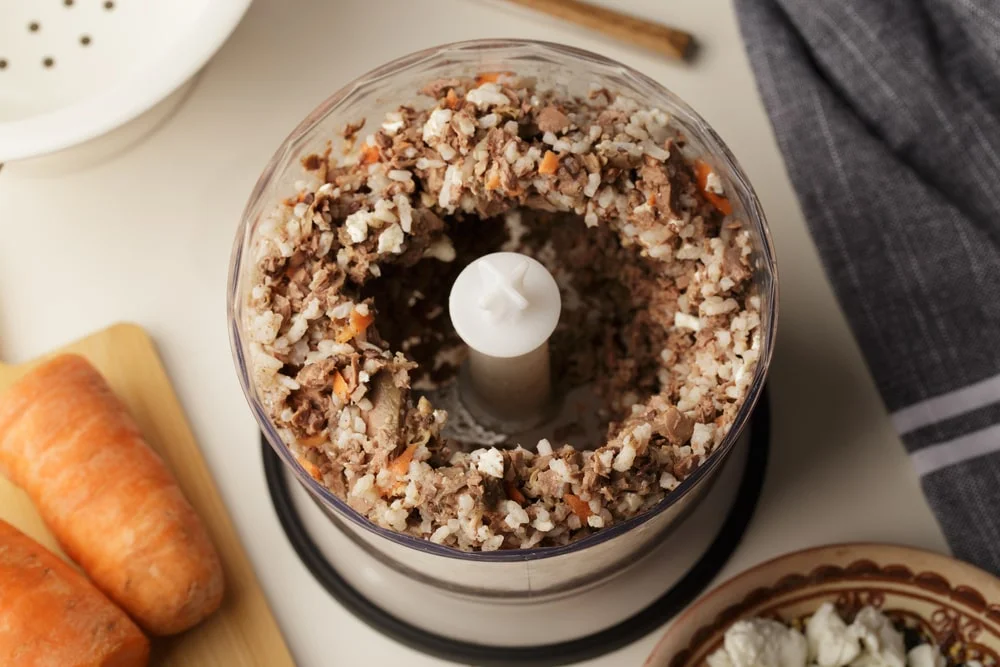PET CARE
Homemade Dog Food: Is It Right for Your Pup?
A dog’s diet is essential to their health and happiness and, naturally, that starts with feeding them nutritious food. Luckily, there are several ways to ensure a healthy diet — homemade dog food included! Let’s dig into the details of this dog food option, the pros and cons, and what’s needed to make sure your pup is getting adequate nutrition.
Help Keep Your Dog Healthy and Happy With a MetLife Pet Policy
Can You Make Your Own Dog Food?
You can absolutely make your own dog food — it’s one of the many options pet owners have to meet their dog’s dietary needs. But these needs differ from those of humans. The food you make for yourself might not meet all of the nutritional requirements for your canine friend.
Can Homemade Dog Food Provide a Balanced Diet?
Homemade food can provide a balanced diet for your dog. The key is ensuring the recipe provides adequate nutrition according to minimum requirements set by The Association of American Feed Control Officials (AAFCO). Additionally, each dog’s nutritional requirements will depend on their age, size, health, and breed.1
One way to make sure your dog is getting a balanced diet on homemade food is by enlisting the help of a Board Certified Veterinary Nutritionist (BCVN).1
Recipes found across the internet, even some by vets, might not be written by someone who has the proper education and training to create a nutritionally sufficient recipe. BCVNs combine medical knowledge from vet school with nutrition knowledge from their residency to create vet-approved homemade dog food recipes that meet canine dietary requirements.2
Essential Ingredients in a Homemade Dog Food Recipe
First, water is considered a nutritional requirement in your dog’s diet. It helps the body absorb water-soluble vitamins and maintain bodily functions. Water might be used in preparing their homemade food, but dogs also need access to clean drinking water. Deficiencies can lead to dehydration and other problems, like urinary and gastrointestinal issues.1,5
Second, to meet official feed standards set by AAFCO, homemade dog food recipes should have all of the essential nutrients, in the right amounts, that your dog needs. According to their requirements, dog food should have the following:1,3,4,5
Protein
Dogs need protein for energy production, as well as for forming and maintaining things like muscles, ligaments, blood, and skin. Adult maintenance diets should be made of at least 18% crude protein — like poultry, beef, or fish. Puppies and pregnant or lactating (reproductive) females need at least 22.5% protein.
Carbohydrates
The AAFCO doesn’t have specific requirements for the amount of carbs in dog food, but a good starting point might be about 20%. Carbs help supply critical glucose (think: energy) and dietary fiber. Dogs can eat carbs like rice, oats, potatoes, barley, and more. While dietary fiber can be supplied by starchy carbs, it can also come from fruits.
Fat and fatty acids
A balanced diet should include fatty acids to support cell function, absorption of fat-soluble vitamins, and a healthy skin and coat. At least 5.5% of your dog's diet should be made of crude fat — like plant and marine oils or animal fats — for adult maintenance, and 8.5% for puppies and reproductive females.
Vitamins and minerals
While there’s no specific percentage of your dog’s diet that should be made of vitamins and minerals — which help with growth, maintenance, and other bodily functions — there are certain required ones. Some can be found in whole foods, but you’ll likely need to add supplements to your dog’s diet.
Necessary vitamins include vitamins A, D, and E, thiamine (vitamin B1), riboflavin (vitamin B2), niacin (vitamin B3), pantothenic acid (vitamin B5), pyridoxine (vitamin B6), folic acid (vitamin B9), cobalamine (vitamin B12), and choline.
Necessary minerals include calcium, chloride, copper, iodine, iron, magnesium, manganese, phosphorus, potassium, selenium, sodium, and zinc.
You Could Get Dog Supplement Coverage With MetLife Pet
Potential Benefits of DIY Dog Food
Do-it-yourself dog food can be a great option for some pet parents. Advantages of a home-cooked diet might include:
- Choosing the food quality: With commercial dog food, while there may be good ingredients, you don’t know their exact quality. Making dog food at home allows you to choose the quality of the ingredients you’re using.
- Knowing the food safety: If you’re concerned about potential recalls, manufacturing contamination, or false labeling, home-cooked food might help you avoid these situations.
- Addressing food allergies: For some dogs with food allergies or sensitivities, it may be hard to find commercially prepared food that works for them. With a home-prepared diet, you can customize it to fit your pup’s needs.
- Adding whole foods: Homemade food is a great opportunity to add fresh, whole foods to your dog’s day.
If you’re considering making homemade dog food over getting your pup prescription food due to the cost, a MetLife Pet Insurance policy may be able to help you cover vet-prescribed food.
Potential Drawbacks of DIY Dog Food
Is homemade dog food better than the rest? Not always. Some drawbacks of making your dog’s food at home might be:
- A potentially imbalanced recipe: If you’re not using a complete and balanced dog food recipe, your dog could be missing out on essential nutrients — which can result in nutrient deficiencies and other health problems.1
- Too time-consuming: Homemade dog food might not be as convenient. You’ll have to commit to a routine schedule to shop for ingredients and prepare the food.
- Storage and spoilage issues: Depending on how much food you make at a time, it could require a lot of fridge or freezer space to store. And since it’s fresh food, you may have to worry about it spoiling before it can be eaten — something that could take a lot longer to happen with commercial dog food.
- The cost: Your average dry food from the store could be cheaper than freshly prepared dog food. This depends on the ingredients and supplements you need, how much of them you need, and how often you need to buy them. Keep your budget in mind if you’re thinking of switching.
How To Make Homemade Dog Food
There are a few general steps to making your own dog food:
- Find a recipe approved by a Board Certified Veterinary Nutritionist, or search for a vet specialist to work with.
- Purchase quality ingredients without any seasonings. It’s important to stick to the recipe and not substitute ingredients.
- Prepare a functional working space free of potentially-toxic foods for dogs.
- Measure the ingredients using a kitchen scale to ensure the right amounts are being used.
- Prepare the food based on the recipe instructions. This could involve kitchen items like a stove, oven, food processor, and/or mixer.
- Store food properly in the refrigerator or freezer, and use it before the recommended dates, according to the recipe’s guidelines.
Homemade dog food recipe resources
If you’re considering fresh dog food, BalanceIt.com can be a valuable resource in your research process. Run by a veterinary nutritionist, Balance ItⓇ is an online service that can help you plan a basic, nutritionally balanced diet.5 It’s still a good idea to work with a BCVN to make sure the recipes are right for your dog.6
Don’t forget that your regular vet is an important resource in this process, too. They know your dog’s specific needs and can give their recommendations. They may even have a veterinary nutritionist on staff or a professional referral.
Switching Your Dog to a Homemade Diet
Take the time to carefully weigh your needs and expectations before switching from kibble. And remember that commercially prepared fresh dog food is also an option.
If you’ve decided to switch your pup from store-bought dry or wet food to homemade, follow the instructions for the daily recommended portions. The amount of food your dog needs to eat when it’s made of fresh, whole foods could be different from the amount you’re used to feeding them with their current food.
For example, if you normally feed your dog 2 cups of dry food per day, that may not be the same amount of homemade food your dog needs to get the same level of required nutrients.
When switching, it’s important to slowly transition from kibble to homemade food so you don’t upset your dog’s stomach. Ask your vet for their recommended transition timeline. You may also need to adjust the homemade recipe depending on how your dog responds to it. These changes should also be made gradually.
How do you know if it’s good for your dog?
Not all dogs may benefit from a homemade diet. Some — like those who are growing, pregnant, or have medical conditions — have specific dietary needs that might not be as easily addressed by homemade foods.1
If you’ve started your dog on a homemade diet, some signs to look for that may indicate it’s not compatible or agreeing with them include:1
- Diarrhea
- Abnormal weight loss or gain
- Changes in appetite or energy levels
- Any other signs that they’re not feeling well
Sometimes, it’s trial and error until you find the right recipe and ingredients for your pup. Other times, homemade dog food just might not be a good fit for them. Keep in contact with your veterinarian while monitoring your dog after changing their diet.
Help Keep Your Pup Healthy With MetLife Pet Insurance
Whether or not homemade dog food is the right choice is between you, your dog, and your vet. Regardless of the kind of food you feed them, keeping your pup healthy is likely top of mind.
A dog insurance policy from MetLife Pet can reimburse you up to 90% of covered costs when they’re hurt or sick.7 And with the optional Preventive Care plan, you can get coverage for routine and wellness expenses to help keep them healthy.
Your pet makes a difference in your life, so get coverage that makes a difference in theirs. Customize your MetLife Pet plan today starting with a free quote.
We Can Help Cover Vet Bills While You Focus on Your Dog's Care
855-270-7387



